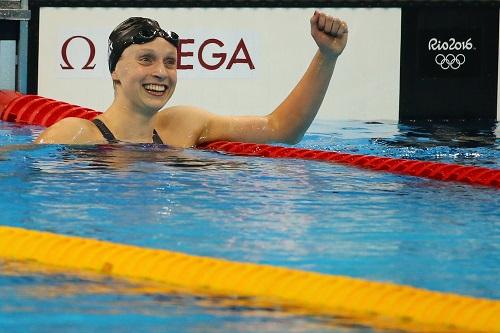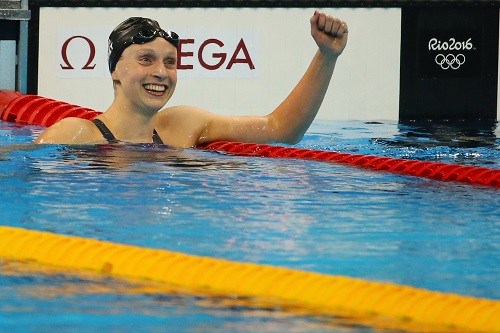

Despite the fact that many colleges are returning to in-person classes, the higher education system as a whole is still reeling from the impact that COVID continues to make. And as a result, varsity sports programs are becoming the casualties in the battle against the pandemic.
Increasingly, sports programs that have been deemed “non-revenue” by colleges are being dropped. (The quickest explanation: If you’re a sport and you’re not drawing the big crowds and media love the way, for example, football and basketball do, you’d better watch your back).
A full listing of colleges that have made announcements about their sports programs appears here; an alphabetical list, searchable by school, can be found here.
(Side note: Kinda sad that there are so many programs being cut, and that the list changes so rapidly, that we can’t list them all here).
There are multiple downsides to this situation, say industry leaders, not the least of which is a loss of opportunities for students who want to remain active and represent their school, and the many scholarships that stand to be cut. However, an even further-ranging problem — which nobody is mentioning – is the absolute threat to the USA’s ability to field quality Olympic teams in years to come since many Olympic athletes are standouts in their college programs.
One of those programs is swimming, and Greg Earhart, of the College Swimming and Diving Coaches of America, remarked in an article in Sports Illustrated that unfortunately, the impact of cutting programs will trickle all the way down to the youth level.
“People start to see this in the news,” Earhart pointed out. “Parents have choices of what they want to enroll their kids in. Now we see fewer kids involved in swimming. If you don’t have eight-year-olds enrolling in swimming, you’re not developing the pipeline to get players to London or Tokyo [for the Olympics].”
Another casualty will be felt on the tournament scene. If fewer youth athletes take up a sport, tournaments suffer as well. And parents, long used to making financial sacrifices to keep kids enrolled in sports, will be less likely to spend the money they would have used to register for, travel to and attend those tournaments if they don't see them as worthwhile.
Earhart told The Washington Post that college swimming is the “secret weapon in terms of how we prepare the elite” but said its presence also impacts the sport’s whole landscape in the country, including youth athletes and the events they attend.
In agreement on this point is Sarah Wilhelmi, the U.S. Olympic and Paralympic Committee's director of college partnerships; according to Wilhelmi, a whopping 88 percent of American summer Olympians in Rio had played their sport in college, and in the 2018 Winter Games, one-third of Americans were former college athletes.
Big 12 Commissioner Bob Bowlsby told the Los Angeles Times that cutting any sport that appeared in the Olympics was an incredibly short-sighted measure, and was obviously being taken by schools who were in panic mode and not using reason.
“There are only 17 men’s gymnastics programs in the country,” he said. “If those go away, our Olympic efforts in men’s gymnastics will be devastated. Similarly, with different numbers, the same is true with women’s gymnastics and swimming, wrestling and a whole array of other things like water polo.”
By the way, he said that in July and by now, several colleges have since announced cuts to those exact programs.
While many sports have been removed, the ones most frequently singled out for elimination were golf, tennis, swimming & diving, track & field and cross country. Among all these, tennis was the biggest casualty, initially losing more than two dozen teams – a number that is, unfortunately, likely to go up.
To put the problem in a microcosm, there is this example: The Washington Post noted that a total of 29 U.S. athletes in Rio — including swimmer Katie Ledecky and four members of the gold medal-winning women’s water polo team — had ties to Stanford University alone. Those athletes combined to win 27 medals for the United States, more than any other university’s contingent.
And here’s the kicker: Four of those medals were won by athletes from sports among the 11 programs Stanford decided to cut.
The value of college teams runs deep in Team USA. In fact, the Washington Post noted, “just four of the 129 U.S. track and field athletes at the 2016 Olympics did not compete in college. In swimming, only one of the 47 athletes didn’t swim in college. Some sports — including indoor volleyball, rowing, field hockey and fencing — all programs Stanford cut — had rosters made up entirely of college athletes.”
Kawika Shoji, an indoor volleyball player who helped win a bronze medal for Team USA in Rio, told the Post that it’s not the high-profile varsity sports like basketball that pluck athletes from the college ranks and propel them to the Olympics. Rather, it’s sports like fencing, rowing and others that serve as the launchpad, and bring in standout high school athletes to the schools known for their teams.
“If you look at a lot of the athletes going to the Olympics, they are from some fringe sports that aren’t always in the public eye,” said Shoji, a 2010 Stanford graduate who won a bronze medal in Rio. “Nevertheless, they’re athletes that our country absolutely values and needs for a lot of different reasons.”
Colleges that announce cuts in sports can expect public criticism. Occasionally, it becomes internal censure as well. Most recently, the Virginian-Pilot noted, the College of William & Mary announced it was eliminating seven of its 23 varsity sports after the 2020-21 school year: men’s and women’s swimming, men’s and women’s gymnastics, men’s indoor and outdoor track and field, and women’s volleyball. When the announcement was made on Sept. 3, there were immediate complaints that those sports were being cut to place more emphasis on the revenue-producing sports of football and men’s and women’s basketball, and that decisions had been made without discussing the consequences for students.
Enormous fallout followed, with four teams — women’s gymnastics, women's volleyball and men's and women's swimming — quickly announcing they had retained counsel and were prepared to pursue a class action lawsuit against the college if their sports were eliminated. The resulting furor promoted administrators to promise to open a dialogue with representatives of the programs; a total of 118 students stood to be affected by the cuts — something administrators had failed to point out (but others quickly did).
Of course, William & Mary officials were even more embarrassed to learn that the school’s athletic director, Samantha Huge, made her announcement using similar, and in places identical, wording to that found in the announcement sent to Stanford students in July 2020 when that school’s cuts were noted.
Cutting sports without discussion was distasteful but plagiarism was a humiliation Wiliam & Mary was not expecting — and students, sports supporters and critics went wild over it. Huge released an apologetic statement, trying to cover her tracks by saying that she had looked to peers at several insitutions for guidance — but by that time, the damage was done. About a month later, Huge formally resigned – just 30 minutes prior to a meeting in which the school’s Arts & Sciences Faculty would have given her a vote of no confidence.
In some cases, funding of sports programs has been saved by the intercession of alumni, students, donors or a combination thereof. Bowling Green University announced it would eliminate its baseball program but then walked the declaration back after receiving private funding. The University of Alabama-Huntsville rescinded its decision to shutter the hockey program after local supporters raised the funds to keep it going.
Unfortunately, programs that manage to bounce back after being axed are an exception to the rule. The Washington Post article relayed the information that when the University of Akron dropped its men’s cross-country team this past spring (along with men’s golf and women’s tennis), Olympic bronze medalist and Akron runner alum Clayton Murphy visited the school in an attempt to convince them to salvage the program. Murphy told reporters he had one conversation with the university president and that “it didn’t help at all.” Ultimately, Murphy cut ties with the school, revoking permission for the university to use his name and image for promotional purposes — something that in the long run, will cost the school far more than they would save by cutting the program in the first place. (It bears out Bob Bowlsby's comment earlier about the short-sighted decisions made by schools in panic mode).
Each time cuts are made, it sends shockwaves through the sports industry. Event planners see fewer opportunities for tournaments. Destinations see fewer opportunities for hosting. And at the end of that line, the USA sees a future of mediocre Olympic results, devoid of the standout athletes who formerly boosted the USA’s medal count and made it an athletic power.
“We are all holding our breath in the Olympic sports community,” Kathy DeBoer, executive director of the American Volleyball Coaches Association, told Sports Illustrated. “The people in sports that are not dropped get to breathe again. It’s like there are six bullets in the gun and 10 of us are standing there. If you’re still standing, I guess you want to celebrate, but you don’t — you just start breathing again before the next round.”
And, noted Mike Moyer, executive director of the National Wrestling Coaches Association, who was quoted in the same article, the concept of schools discontinuing teams to try to save money is simply kicking the can down the road without addressing the real problem: an NCAA model that, because of gross expenditures on football and men’s basketball, has lost its original purpose of broad-based educational and athletic opportunities.
“It’s clear that the D-I model of intercollegiate athletics has been broken,” said Moyer. “COVID-19 is just exposing it.”

